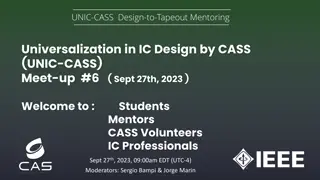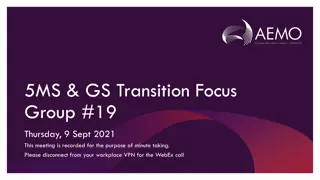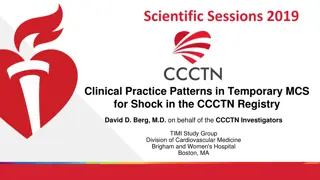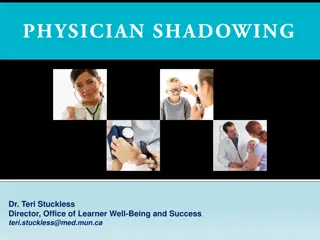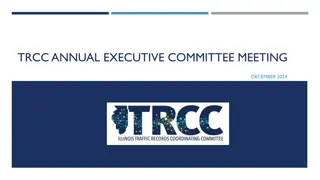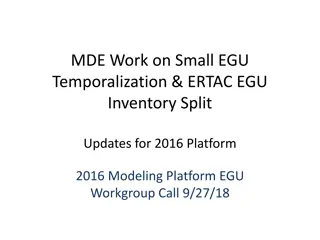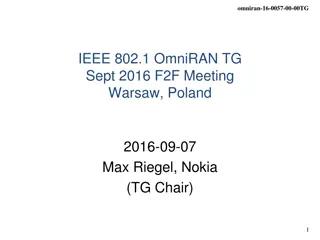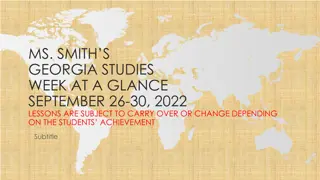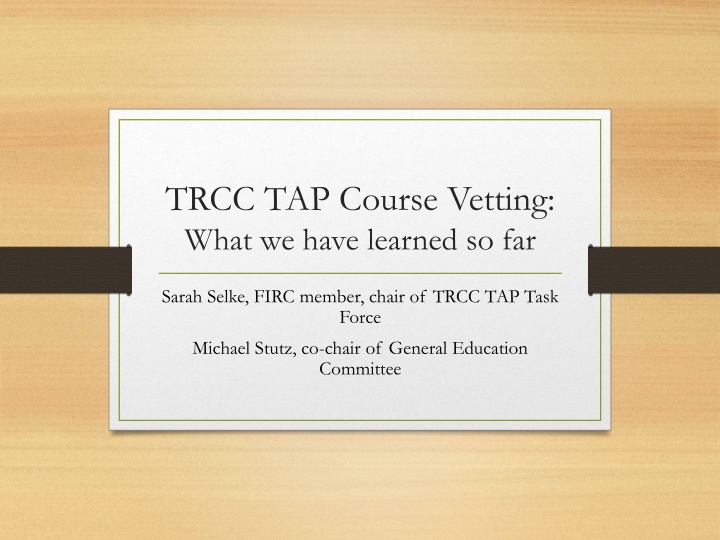
TRCC TAP Course Vetting Process and Criteria Overview
Explore the evolution of the TRCC TAP course vetting process, including the criteria and phases involved in assessing TAP competencies. Learn about the challenges faced, revised processes implemented, and the transition to vetting embedded competencies in courses. This comprehensive overview sheds light on the thorough evaluation framework in place.
Uploaded on | 11 Views
Download Presentation

Please find below an Image/Link to download the presentation.
The content on the website is provided AS IS for your information and personal use only. It may not be sold, licensed, or shared on other websites without obtaining consent from the author. If you encounter any issues during the download, it is possible that the publisher has removed the file from their server.
You are allowed to download the files provided on this website for personal or commercial use, subject to the condition that they are used lawfully. All files are the property of their respective owners.
The content on the website is provided AS IS for your information and personal use only. It may not be sold, licensed, or shared on other websites without obtaining consent from the author.
E N D
Presentation Transcript
TRCC TAP Course Vetting: What we have learned so far Sarah Selke, FIRC member, chair of TRCC TAP Task Force Michael Stutz, co-chair of General Education Committee
Overview Evolution of the vetting process Criteria for Vetting Assessment of TAP competencies
Phase One (AY14-15) Vetting of Designated Competencies Begins in department/program Completed application General Education committee reviews preliminary designations Gen Ed recommendation & original departmental application are forwarded to Curriculum Committee Curriculum Committee approves designation
Challenge 1 CSC 108 Introduction to Programming Submitted by member of Technologies Department Vetted for Scientific Reasoning Application was also reviewed by Science Department
Revised Process I If application originates from faculty member outside of department traditionally associated with competency . . . Application is forwarded to that department for review Additional documentation may be requested Syllabus Sample assignments
Revised Process II Recommended that faculty member submitting application attends General Education Committee and presents application in person Artifact for assessment (copy of assignment) is required as part of original application
Revised Process III In the spring of 2015 the General Education Committee created a set of criteria to be used when determining if a course should be considered for a particular competency.
Phase Two (AY15-16) Vetting of Embedded Competencies Written Communication III Ethics Continued Learning/Information Literacy Modification of the Gateway Model Embedded outcomes are linked to some designated competencies
Embedded Competency Map Ex. Historical Knowledge/Understanding courses must also teach and assess: Outcomes 10 and 11 from Ethics Outcomes 1, 2, 3 & 4 from Written Communication See handout for complete map of embedded competencies
Criteria for Vetting - application TRCC application is a modification of GCC s application In application, faculty must demonstrate that course objectives align with TAP outcomes See handout TRCC TAP Competency Designation Form
Challenge 2 CSC 224 Java Programming 2 Vetted for Critical Analysis and Logical Thinking Course outcomes seem to fit TAP objectives, but how will course be assessed? Rubrics seem geared toward written artifacts
Criteria for Designating a Competency (Guidelines for Faculty) 1. Is the entire competency form completed; including course description, course content, course outcomes and assignments? 2. Is there a substantive amount of teaching/learning of the subject matter relevant to the competency? (Needs to comprise at least 2/3 of the course)
Criteria for Designating a Competency (Guidelines for Faculty) 3. Are there assignments related to the competency? How many? How much assignments time (for the semester) is devoted to this/these assignments? 4. Is the attached model assignment appropriate to the competency?
Criteria for Designating a Competency (Guidelines for Faculty) 5. Would the absence of the material/assignments relevant to the competency substantially alter the course? 6. If the competency is outside of the submitting faculty member s primary field, was a discipline expert for a field within the competency s primary area consulted in drafting the form? Do they endorse the competency designation?
Observations/Trends Traditional disciplinary boundaries did not preclude a course from being vetting for a TAP competency CSC 108 and CSC 224 are two examples Chemistry courses vetted for Quantitative Reasoning Spanish courses vetted for Social Phenomena 10% of vetted courses fall outside of traditional boundaries (16 out of 160)
Observations/Trends No rule about the number of competencies a course can cover However, most faculty only apply for one or two competencies per course Rubrics are not required for the initial vetting process Used for assessment Used for secondary review of a course form
Assessment TRCC has adopted the TAP competencies as our Gen Ed competencies TRCC has a robust General Education assessment program Artifacts are collected via Digication E-portfolio platform Every faculty member teaching a TAP course must have students upload an artifact to Digication every semester
Assessment Each academic year, two competencies are evaluated Artifacts are randomly selected from the pool of artifacts stored in Digication A team of 3-5 faculty scores the artifacts using the TAP rubrics Our assessment process will be the Quality Control for our course vetting process
TRCC Multi-year Assessment Cycle AY 2015-2016 Oral Communication, Historical Knowledge and Understanding AY 2016-2017 Scientific Reasoning, Scientific Knowledge and Understanding AY 2017-2018 Social Phenomenon and Understanding, Appreciation of the Aesthetic Dimensions of Humankind
Challenge 3 Designing one assessment tool (assignment) that includes all of the outcomes of a TAP competency OR Managing an assessment process that requires multiple assessments for a competency
Questions? Sarah Selke, Associate Professor of Biology 860-215-9470 sselke@trcc.commnet.edu Michael Stutz, Associate Professor of Communication 860-215-9479 mstutz@trcc.commnet.edu



